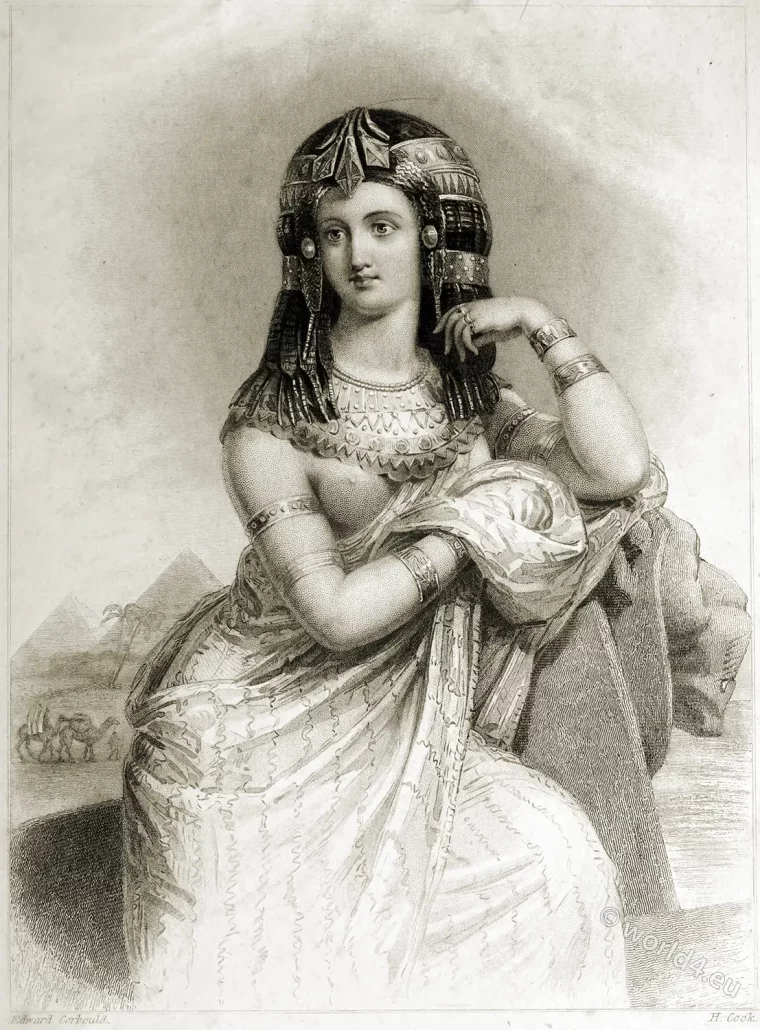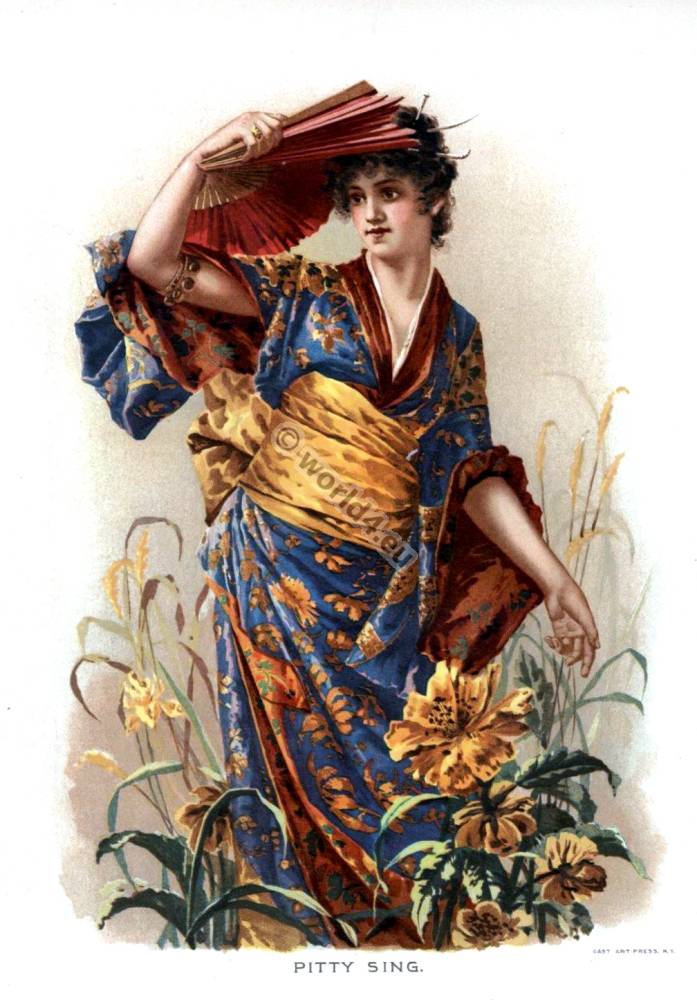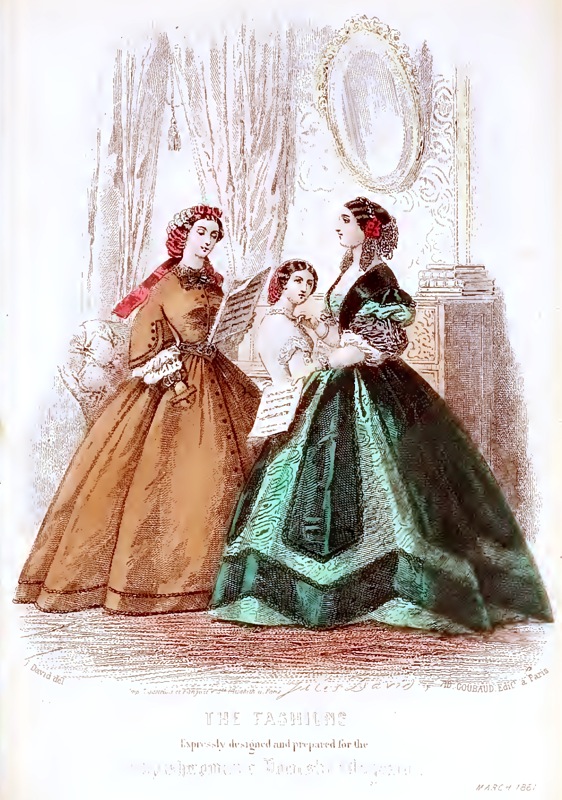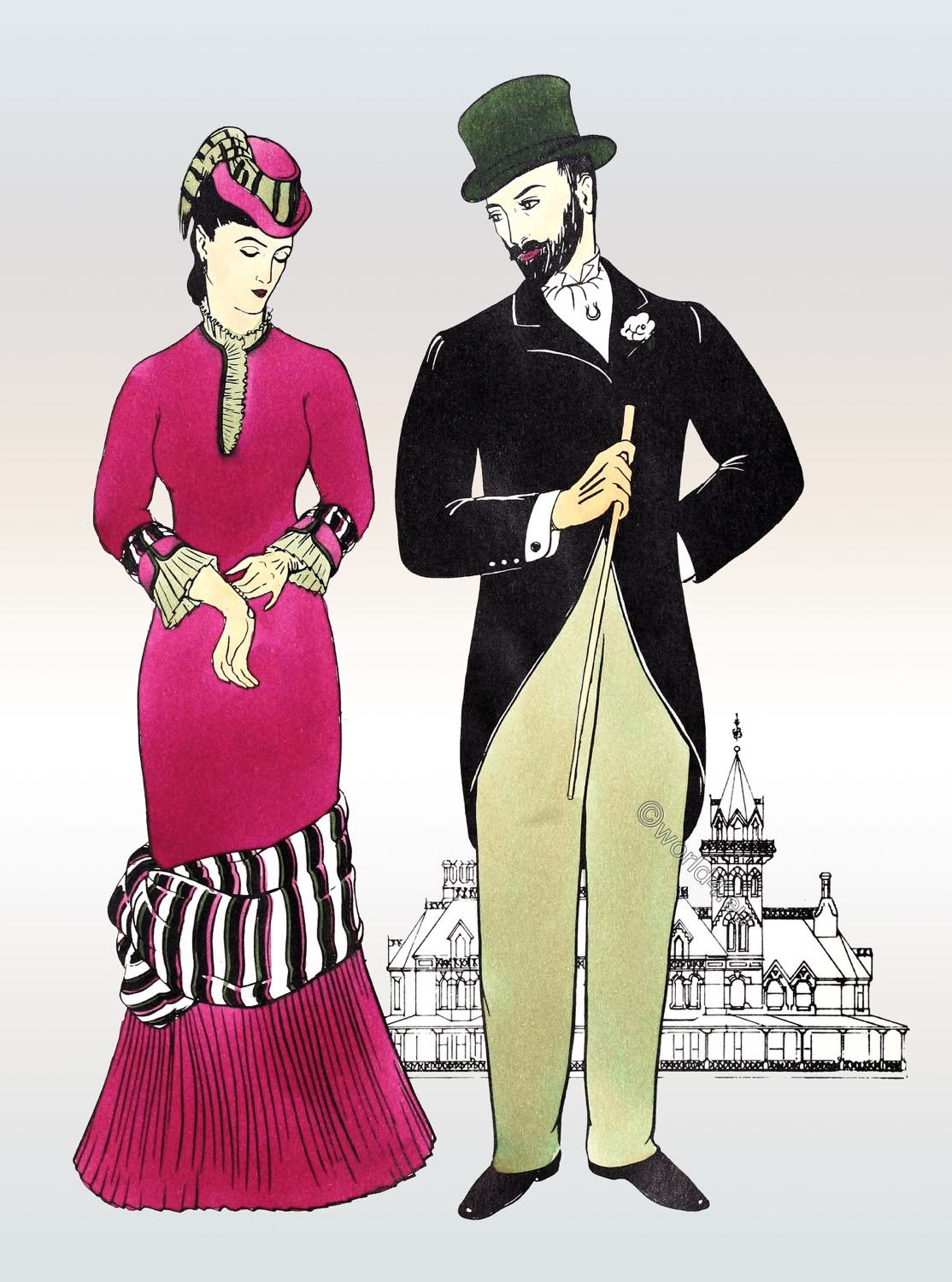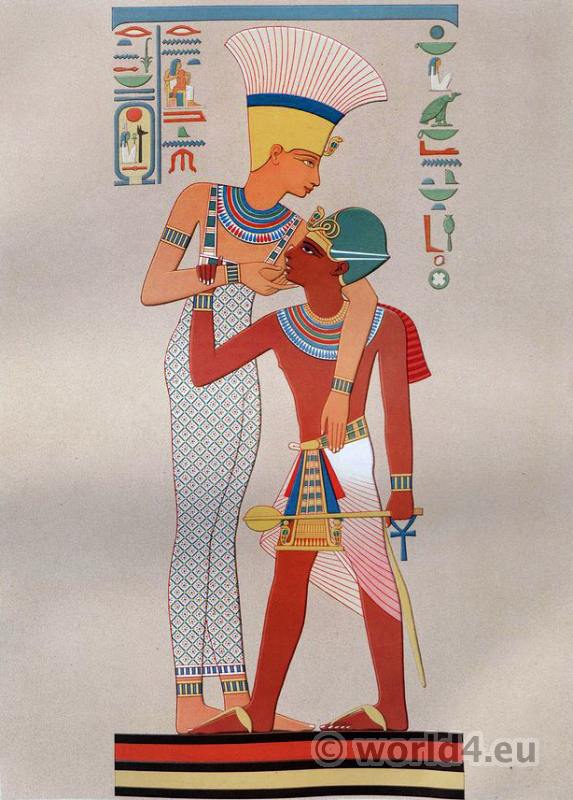Costume and fashion presentation in Romanticism of Victorian England.
ANCIENT EGYPTIAN COSTUME.
However numerous may be the varieties of female dress, they all resolve into a few simple elements. The tunic was the earliest garb of civilisation, replacing the coverings made of the skins of wild beasts; and to this came to be superadded first one form of mantle, and then another, with the oriental veil. From these proceed the thousand shapes of Fashion; including even most of the additions demanded by climate, after the human race had become enervated by the progress of luxury.
In this very curious print, the costume of which was faithfully copied from the case of a mummy, we behold, it is supposed, a daughter of one of the Pharaohs. The loose tunic, it will be observed, is not clasped on both shoulders, in the manner of the more modern Greeks, but hangs upon one shoulder, leaving the opposite side of the bust exposed. This continues to be the case in Hindustan at the present day; and it affords a corroboratory proof of the connexion which is supposed by the learned to have existed between the nations of India and the ancient Egyptians.

The American Duchess Guide to 18th Century Dressmaking: How to Hand Sew Georgian Gowns and Wear Them With Style by Lauren Stowell (Author), Abby Cox (Author).
Lauren Stowell and Abby Cox of American Duchess have endeavored to make the impossible possible by bringing historically accurate dressmaking techniques into your sewing room. Learn how to make four of the most iconic 18th century silhouettes―the English Gown, Sacque Gown, Italian Gown and Round Gown―using the same hand sewing techniques done by historic dressmakers.
The singular and gorgeous head-dress is peculiar to Egypt; and yet is somewhat similar in effect to the short veil worn by the Syrian women. The profusion of “jewels of silver and jewels of gold” was fashionable so early as the Captivity, as we read in the book of Exodus; and the fondness of the Israelites afterwards — described by Isaiah and Ezekiel — for this species of ornament was in all probability acquired in the House of Bondage.
Source: Beauty’s costume; a series of female figures in the dresses of all times & nations by Leitch Ritchie. London, Longman’s, 1838.
Discover more from World4 Costume Culture History
Subscribe to get the latest posts sent to your email.

